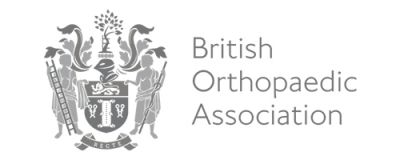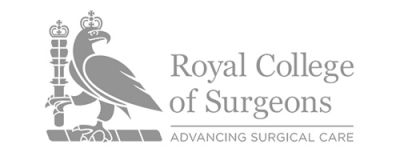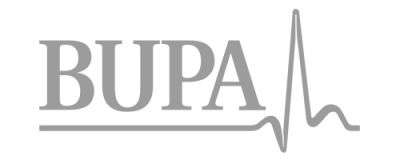COMMON CONDITIONS OF THE HIP
The information outlined below on common conditions and treatments is provided as a guide only and it is not intended to be comprehensive.
Discussion with James is important to answer any questions that you may have. For information about any additional conditions not featured within the site, please contact us for more information.
Most cases of hip pain in adults that are treated with surgery are caused by osteoarthritis, the most common type of arthritis in the UK.
OSTEOARTHRITIS
The symptoms of osteoarthritis can vary greatly from person to person, but if it affects the hip, it will typically cause:
• mild inflammation of the tissues in and around the hip joint
• damage to cartilage – the strong, flexible tissue that lines the bones
• bony growths (osteophytes) that develop around the edge of the hip joint
This can lead to pain, stiffness and difficulty doing certain activities.
There’s no cure for osteoarthritis, but the symptoms can be eased using a number of different treatments. Surgery isn’t usually necessary.
LESS COMMON CAUSES
Less commonly, hip pain may be caused by:
• the bones of the hip rubbing together because they’re abnormally shaped – a condition called femoroacetabular impingement
• a tear in the ring of cartilage surrounding the socket of the hip joint – known as a hip labral tear
• hip dysplasia – where the hip joint is the wrong shape, or the hip socket isn’t in the correct position to completely cover and support the top of the leg bone
• a hip fracture – this will cause sudden hip pain and is more common in older people with weaker bones
• an infection in the bone or joint, such as septic arthritis or osteomyelitis – see your GP immediately if you have hip pain and fever
• reduced blood flow to the hip joint, causing the bone to break down – a condition known as osteonecrosis
• inflammation and swelling of the fluid-filled sac (bursa) over your hip joint – a condition called bursitis
• a hamstring injury
• an inflamed ligament in the thigh, often caused by too much running – known as iliotibial band syndrome
WHEN TO SEEK MEDICAL ADVICE
Hip pain often gets better on its own, and can be managed with rest and over-the-counter painkillers, such as paracetamol and ibuprofen.
However, see your GP if:
• your hip is still painful after one week of resting it at home
• you also have a fever or rash
• your hip pain came on suddenly and you have sickle cell anaemia
• the pain is in both hips and other joints as well
Go straight to hospital if:
• the hip pain was caused by a serious fall or accident
• your leg is deformed, badly bruised or bleeding
• you’re unable to move your hip or bear any weight on your leg
• you have hip pain with a temperature and feel unwell
Overactivity
If your hip pain is related to exercising or other types of regular activity:
• cut down on the amount of exercise you do if it’s excessive
• always warm up before exercising and stretch afterwards
• try low-impact exercises, such as swimming or cycling, instead of running
• run on a smooth, soft surface, such as grass, rather than on concrete
• make sure your running shoes fit well and support your feet properly
The two main forms of arthritis affecting the hip are osteoarthritis (OA) and rheumatoid arthritis (RA).
OSTEOARTHRITIS
Osteoarthritis is by far the most common form of arthritis. It is estimated that 25% of females and 16% of males over the age of 60 are symptomatic from osteoarthritis. Over 55,000 hip replacements are performed in the UK each year to treat osteoarthritis. This page concentrates on osteoarthritis.
OA is a degenerative disorder in which there is progressive loss of articular (surface) cartilage accompanied by new bone formation and capsular fibrosis (stiffening). In effect, this is ‘wear and tear’ arthritis. Many joints can be affected or just one.
There are 2 basic types of osteoarthritis; primary and secondary:
PRIMARY
• No obvious cause
• Many joints involved including fingers, big toe, knees, spinal facet joints
• Usually starts in the hands
• Mainly postmenopausal women
• Familial; i.e. can be inherited
• Same pathology as single joint osteoarthritis
SECONDARY
• Estimated 80% of all OA
• Normal cartilage having to cope with an abnormal load
• Abnormal cartilage having to cope with a normal load
• Cartilage break-up occurs due to defective subchondral bone (bone beneath the articular cartilage)
RHEUMATOID ARTHRITIS
Rheumatoid Arthritis is a condition of unknown cause where the lining membrane (the synovium) of joints becomes inflamed. Damage to the joint surfaces follows, resulting in the destruction of the lining cartilage; the joint becomes painful and arthritic. Many joints can be involved, especially those in the hands and feet, but the larger joints such as the hip and knee are also commonly affected.
CAUSES
There is no obvious cause of primary osteoarthritis; causes of secondary OA include:
• Previous trauma (fracture, dislocation and cartilage injuries)
• Developmental disorders causing abnormal anatomy (e.g. hip dysplasia)
• Childhood hip conditions such as Perthes’ Disease
• Miscellaneous conditions such as avascular necrosis
SYMPTOMS
The overwhelming symptom from hip arthritis is pain. The nerve supply to the hip joint is complex, and as a result pain that comes from the hip can be felt in several different sites. Commonly, pain is felt in the groin, but pain can also be experienced down the inside of the leg, into the knee and sometimes down to the ankle. It can also be felt in the buttock, in the top of the thigh, and rarely in the back.
The pain from hip OA is made worse by activities such as walking for any distance and can often disturb sleep. As a result of joint stiffness patients often have difficulty putting on their shoes and socks.
TREATMENT OPTIONS
Many patients with arthritic hips do not need a hip replacement. There are many ways of coping with the pain from hip arthritis; they include:
• Simple painkillers
• Anti-inflammatory medication
• Weight reduction
• Activity modification
• Using a walking stick (using the stick on the SAME side)
• Physiotherapy
• Steroid injection into the hip joint; usually a day case procedure
However, in the majority of cases there comes a point when these are insufficient and the amount of pain and its impact on lifestyle become intolerable. Hip replacement then becomes a sensible treatment option.
Avascular necrosis is the death of bone tissue due to a lack of blood supply. Also called osteonecrosis, avascular necrosis can lead to tiny breaks in the bone and the bone’s eventual collapse. The blood flow to a section of bone can be interrupted if the bone is fractured or the joint becomes dislocated. Avascular necrosis is also associated with long-term use of high-dose steroid medications and excessive alcohol intake.
Anyone can be affected by avascular necrosis. However, it’s most common in people between the ages of 30 and 60. Because of this relatively young age range, avascular necrosis can have significant long-term consequences.
SYMPTOMS OF LIGAMENT TEARS
Many people have no symptoms in the early stages of avascular necrosis. As the condition worsens, your affected joint may hurt only when you put weight on it. Eventually, the joint may hurt even when you’re lying down. Pain can be mild or severe and usually develops gradually. Pain associated with avascular necrosis of the hip may be focused in the groin, thigh or buttock. In addition to the hip, the areas likely to be affected are the shoulder, knee, hand and foot. Some people develop avascular necrosis bilaterally — for example, in both hips or in both knees.
CAUSES OF AVASCULAR NECROSIS
Avascular necrosis occurs when blood flow to a bone is interrupted or reduced. Reduced blood supply can be caused by:
• Joint or bone trauma. An injury, such as a dislocated joint, might damage nearby blood vessels. Cancer treatments involving radiation also can weaken bone and harm blood vessels.
• Fatty deposits in blood vessels. The fat (lipids) can block small blood vessels, reducing the blood flow that feeds bones.
• Certain diseases. Medical conditions, such as sickle cell anemia and Gaucher’s disease, also can cause diminished blood flow to bone.
For about 25 percent of people with avascular necrosis, the cause of interrupted blood flow is unknown.
RISK FACTORS
Risk factors for developing avascular necrosis include:
• Trauma. Injuries, such as hip dislocation or fracture, can damage nearby blood vessels and reduce blood flow to bones.
• Steroid use. High-dose use of corticosteroids, such as prednisone, is the most common cause of avascular necrosis that isn’t related to trauma. The exact reason is unknown, but one hypothesis is that corticosteroids can increase lipid levels in your blood, reducing blood flow and leading to avascular necrosis.
• Excessive alcohol use. Consuming several alcoholic drinks a day for several years also can cause fatty deposits to form in your blood vessels.
• Bisphosphonate use. Long-term use of medications to increase bone density may be a risk factor for developing osteonecrosis of the jaw. This complication has occurred in some people treated with these medications for cancers, such as multiple myeloma and metastatic breast cancer. The risk appears to be lower for women treated with bisphosphonates for osteoporosis.
• Certain medical treatments. Radiation therapy for cancer can weaken bone. Organ transplantation, especially kidney transplant, also is associated with avascular necrosis.
Medical conditions associated with avascular necrosis include:
• Pancreatitis
• Diabetes
• Gaucher’s disease
• HIV/AIDS
• Systemic lupus erythematosus
• Sickle cell anemia
TREATMENT OF AVASCULAR NECROSIS
The goal is to prevent further bone loss. Specific treatment usually depends on the amount of bone damage you already have.
MEDICATIONS AND THERAPY
In the early stages of avascular necrosis, symptoms can be reduced with medication and therapy. Your doctor might recommend:
• Nonsteroidal anti-inflammatory drugs. Medications, such as ibuprofen (Advil, Motrin IB, others) or naproxen sodium (Aleve, others) may help relieve the pain and inflammation associated with avascular necrosis.
• Osteoporosis drugs. Medications, such as alendronate (Fosamax, Binosto), may slow the progression of avascular necrosis, but the evidence is mixed.
• Cholesterol-lowering drugs. Reducing the amount of cholesterol and fat in your blood may help prevent the vessel blockages that can cause avascular necrosis.
• Blood thinners. If you have a clotting disorder, blood thinners, such as warfarin (Coumadin, Jantoven), may be recommended to prevent clots in the vessels feeding your bones.
• Rest. Reducing the weight and stress on your affected bone can slow the damage. You might need to restrict your physical activity or use crutches to keep weight off your joint for several months.
• Exercises. You may be referred to a physical therapist to learn exercises to help maintain or improve the range of motion in your joint.
• Electrical stimulation. Electrical currents might encourage your body to grow new bone to replace the area damaged by avascular necrosis. Electrical stimulation can be used during surgery and applied directly to the damaged area. Or it can be administered through electrodes attached to your skin.
SURGICAL AND OTHER PROCEDURES
Because most people don’t start having symptoms until avascular necrosis is fairly advanced, your doctor may recommend surgery. The options include:
• Core decompression. The surgeon removes part of the inner layer of your bone. In addition to reducing your pain, the extra space within your bone stimulates the production of healthy bone tissue and new blood vessels.
• Bone transplant (graft). This procedure can help strengthen the area of bone affected by avascular necrosis. The graft is a section of healthy bone taken from another part of your body.
• Bone reshaping (osteotomy). In this procedure, a wedge of bone is removed above or below a weight-bearing joint, to help shift your weight off the damaged bone. Bone reshaping might allow you to postpone joint replacement.
• Joint replacement. If your diseased bone has already collapsed or other treatment options aren’t helping, you might need surgery to replace the damaged parts of your joint with plastic or metal parts. An estimated 10 percent of hip replacements in the United States are performed to treat avascular necrosis of the hip.
• Regenerative medicine treatment. Bone marrow aspirate and concentration is a novel procedure that in the future might be appropriate for early stage avascular necrosis of the hip. Stem cells are harvested from your bone marrow. During surgery a core of dead hip bone is removed and stem cells inserted in its place, potentially allowing for growth of new bone.
A labral tear of the hip joint is a tear to the cartilage lining of the hip joint called the acetabulum which acts as cushioning for the joint.
LABRAL TEAR SYMPTOMS
Symptoms of a labral tear include pain in the hip or groin. A clicking or locking of the joint can occur. Stiffness and restricted mobility in the hip joint is likely. Symptoms may come on suddenly following an impact or trauma but can also develop gradually if the joint progressively degenerates.
ANATOMY
The socket of the hip joint that the thigh bone sits in is called the acetabulum. This is lined by a ring of cartilage called the labrum. The labrum supplies cushioning and support for the hip joint. Tears can occur in the labrum, also known as a hip labral tear or acetabular labral tear. Tears to the labrum are being diagnosed more often due to the improvements and wider availability of MRI scans which is the only way to diagnose a labral tear 100%.
CAUSES
Labral tears can be acute, caused by trauma such as traffic accidents, collisions and bad falls, falling on to the outside of the hip or twisting on a hip that has a lot of weight on it.
They can also be of gradual onset through repetitive strain on the hip for example in golfers can also be a factor as can impingement of the labrum, known as Femoroacetabular impingement. Two types of impingement can occur either in isolation or some athletes may have both types at the same time.
Cam impingement
Cam impingement occurs when the neck of the femur or thigh bone becomes enlarged or thickened due to additional bone growth. This then impinges on the hip joint and over time causes injury to the labrum. This is also known as a Ganz lesion and is present in almost 80% of patients with femoralacetabular impingement.
It is not known exactly what causes cam impingement. One theory is overloading the growth plates of the femur as an adolescent. Repetitive twisting forces at the hip during activities such as hurdling, horse riding and breastroke swimming may contribute to the deformity. Another theory is genetic factors in that it is simply hereditory as siblings are much more likely to develop impingement.
Pincer Impingement
Pincer impingement occurs when there is a bony growth or spur at the acetabulum which impinges on the femur.
TREATMENT OF LABRAL TEARS
Treatment usually requires surgery known as debridement via an arthroscopy (key-hole surgery). The torn part of the labrum is removed. Generally results from this procedure are very good. A rehabilitation program should be followed after surgery to restore full strength and movement to the hip joint and prevent further injuries or instability. If left the injury could degenerate into a worn hip joint with eroding of the hard cartilage on the ends of the bone and development of Osteoarthritis in the hip.
Surgery
Surgery to repair a torn labrum may consist of removing the torn tissue and cleaning out fragments from the joint.
Discussion with James is important to answer any questions that you may have. For information about any additional conditions not featured within the site, please contact us for more information.






